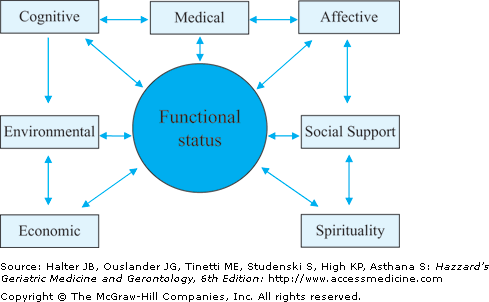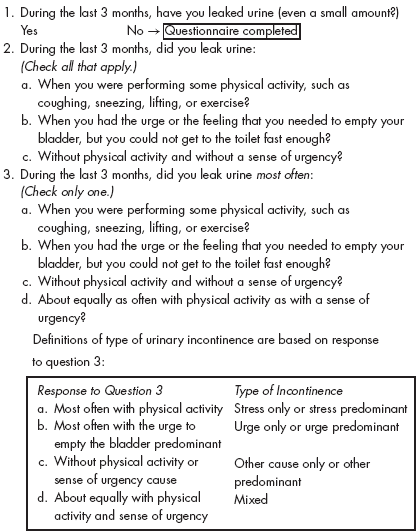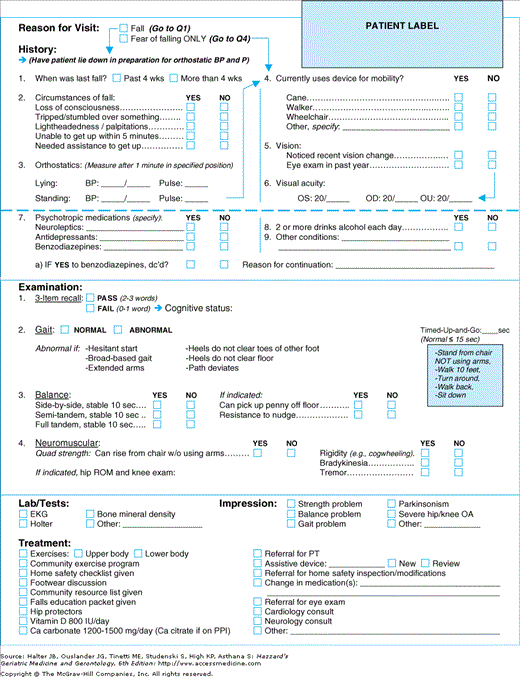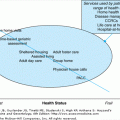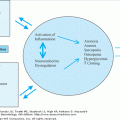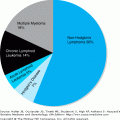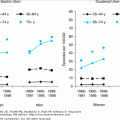Principles of Geriatric Assessment: Introduction
Geriatric assessment is a broad term used to describe the health evaluation of the older patient, which emphasizes components and outcomes different from that of the standard medical evaluation. This approach recognizes that the health status of older persons is dependent upon influences beyond the manifestations of their medical conditions. Among these are social, psychological and mental health, and environmental factors. Geriatric assessment also places high value upon functional status, both as a dimension to be evaluated and as an outcome to be improved or maintained.
Although in the strictest sense geriatric assessment is a diagnostic process, many use the term to include both evaluation and management. Moreover, geriatric assessment is sometimes used to refer to evaluation by the individual clinician and at other times is used to refer to a more interdisciplinary process, comprehensive geriatric assessment (CGA). The terminology is further clouded because the latter process has evolved since its inception with respect to sites where the assessment is provided, the participating health professionals, the nature of the assessment, and the amount of follow-up and management that is included. Accordingly, any discussion of geriatric assessment must be precise in its description of the process of interest.
This chapter is divided into four components: (1) geriatric assessment by the individual clinician, with an emphasis on the outpatient setting; (2) a strategic approach to geriatric assessment for the practicing clinician; (3) CGA and evidence for its effectiveness; and (4) lessons learned from geriatric assessment that have been applied to health care delivery of older persons.
Geriatric Assessment by the Individual Clinician
Geriatric assessment (Figure 11-1) by the individual clinician extends beyond the traditional disease-oriented medical evaluation of older persons’ health to include assessment of cognitive, affective, functional, social, economic, environmental, and spiritual status, as well as a discussion of patient preferences regarding advance directives. Assessment instruments can be used to guide these evaluations but do not substitute for clinical skills and judgment, including the skill of eliciting important items from the patient’s history and physical examination. Information obtained from assessment instruments can direct the clinician’s attention to issues that are particularly relevant to an individual patient. Systematic assessment of the multiple domains noted above ensures that the evaluation is comprehensive. Some clinicians may prefer to rely on less formal questions to probe into potential problems. Examples of potential open-ended questions are provided later in this chapter.
Geriatric assessment differs according to the setting where the patient is being evaluated. In the hospital setting, the initial assessment is usually directed at the acute medical problem that precipitated the hospitalization. As the patient begins to recover and plans are initiated for discharge, other components (e.g., social support, environment) assume increasing importance in the assessment. The inpatient setting can be problematic for geriatric assessment because of the rapidly changing status of several key dimensions. For example, a patient may temporarily become “dependent” on all measures of functional status when acutely ill and gradually improve prior to discharge. Because patients may overestimate their functional status based on their previous level of functioning, direct observational methods (e.g., by nurses or physical therapists) may provide a more accurate assessment. The patient’s full potential to participate in rehabilitation may not be known until near the time of discharge.
Nursing home geriatric assessment requires that attention be directed to selected aspects of assessment such as nutritional status and self-care activities. Other components such as functional status at the instrumental activities of daily living level (e.g., shopping, meal preparation) are less relevant in this setting. Geriatric assessment conducted in the patient’s home provides an opportunity for an entirely different type of assessment; environmental factors (e.g., home safety) and insights into functional status (e.g., cleanliness of the home) can be directly assessed while other aspects of the traditional examination (e.g., the gynecologic examination) are much more difficult.
Because the primary site of most clinicians’ practices is the office setting, assessment techniques are described primarily for this setting. When appropriate, differing, or particularly important information about assessment in other settings is added.
In addition to the standard medical history and physical examination, the clinician should systematically search for specific conditions that are common among older persons and that might have considerable impact on function. In the course of the traditional medical evaluation, these problems may go unnoticed because older patients fail to report them spontaneously. For example, they may not recognize that falling is a treatable medical problem. They may also be embarrassed to mention problems with maintaining urinary continence or with sexual function. Finally, they may believe that these symptoms, such as hearing loss, are normal aspects of aging that cannot be helped.
Visual impairment is a common and often under-reported problem in the older population. Each of the four major eye diseases (cataract, age-related macular degeneration, diabetic retinopathy, and glaucoma) increases in prevalence with age. Moreover, presbyopia is virtually universal and the vast majority of older persons require eyeglasses. Visual impairment has been associated with increased risk of falls, functional and cognitive decline, immobility, and depression. The high rates of vision disorders and their associated sequalea, the brevity of the screening process, and the treatments available for visual impairment justify screening for visual impairment.
The standard method of screening for problems with visual acuity is the Snellen eye chart, which requires the patient to stand 20 ft from the chart and read letters, using corrective lenses. Patients fail the screen if they are unable to read all the letters on the 20/40 line with their eyeglasses (best corrected vision).
Several interviewer and self-administered instruments to detect functional problems caused by visual impairment have been developed, including the “Activities of Daily Vision Scale,” VF-14, VFQ-25, and the Cataract Symptom Scale. These are primarily used in research settings, but may hold promise as screening instruments in the future.
Hearing impairment is among the most common medical conditions reported by older persons, affecting approximately one-third of those 65 years of age or older. Hearing impairment is associated with reduced cognitive, emotional, social, and physical function in older persons and the use of amplification devices has led to improved functional status and quality of life of older persons.
Screening for hearing loss can be accomplished by several methods (Table 11-1). The most accurate of these is the Welch Allyn AudioScope 3 (Welch Allyn, Inc., Skaneateles Falls, NY), a hand-held otoscope with a built-in audiometer. The AudioScope 3 can be set at several different levels of intensity, but should be set at 40 dB to evaluate hearing in older persons. A pretone at 60 dB is delivered and then four tones (500, 1000, 2000, and 4000 Hz) at 40 dB are delivered. Patients fail the screen if they are unable to hear either the 1000- or 2000-Hz frequency in both ears or both the 1000- and 2000-Hz frequencies in one ear, indicating the need for formal audiometric testing.
QUESTION/TEST | TIME TO ADMINISTER | COMMENTS |
|---|---|---|
Audioscope | 1–2 minutes | Sensitivity 87–90%, specificity 70–90% |
Single question: “Do you feel you have a hearing loss?” | <1 minute | Sensitivity 75–81%, specificity 64–70% |
Whisper test | 1 minute | Sensitivity 80–100%, specificity 82–89% |
Hearing handicap | 2 minutes | Sensitivity 48–63%, specificity 75–86% at cutpoint >8 |
Inventory for the elderly NHANES* battery | <2 minutes | Sensitivity 80%, specificity 80% at cutpoint of >3 |
Age >70 = 1 | ||
Male sex = 1 | ||
≤12th grade education = 1 | ||
Previously saw doctor about trouble hearing =1 | ||
Without hearing aid, cannot hear whisper across the room = 1 | ||
Without hearing aid, cannot hear normal voice across the room = 2 |
A simple alternative is to rely on patient’s own subjective report of hearing loss. A self-reported hearing loss question involves asking patients whether they feel they have hearing impairment. An affirmative answer is then considered to be a positive test for hearing loss, and patients should be referred to an audiologist.
Another alternative is the whispered voice test, which is administered by whispering three to six random words (numbers, words, or letters) at a set distance (6, 8, 12, or 24 inches) from the person’s ear and then asking the patient to repeat the words. The examiner should be behind the person to prevent speech reading and the opposite ear should be covered or occluded during the examination. Patients fail the screen if they are unable to repeat half of the whispered words correctly.
Similar to vision screening, a self-administered test of emotional and social problems associated with impaired hearing, the Hearing Handicap Inventory for the Elderly—Screening Version (HHIE-S) was developed. Although this questionnaire is brief and easy to administer, its accuracy when compared to audiometry is less than the audiometer. Another screening instrument that uses sociodemographic information coupled with three simple questions (see Table 11-1) about hearing loss has high accuracy in identifying older persons with hearing loss.
Malnutrition is a global term that encompasses many different nutritional problems that are associated with diverse health consequences. Both extremes of body weight place older people at risk for subsequent functional impairment, morbidity, and mortality. Among community-dwelling older persons, the most common nutritional disorder is obesity. In addition, a small percentage of community-dwelling older persons have energy or protein energy undernutrition, which places them at higher risk for death and functional decline. Protein energy undernutrition is defined by the presence of clinical (physical signs such as wasting, low body mass index) and biochemical (albumin or other protein) evidence of insufficient intake. Although the importance of low serum albumin and low cholesterol as prognostic factors for mortality in community-dwelling, hospitalized, and institutionalized older persons has been demonstrated, these tests may reflect inflammation rather than malnutrition.
Several methods of nutritional screening can be applied in office settings. On their initial visit, patients should be asked about weight loss within the previous 6 months. All patients should be weighed at every office visit. Height should also be measured on the initial visit to allow calculation of body mass index (weight in kg/[height in meters]2). Several self-administered nutritional questionnaires are available, most notably the Nutrition Screening Initiative’s 10-item checklist and the Mini-Nutritional Assessment (MNA). The use of the MNA can help detect risk of malnutrition while albumin and BMI are still in the normal range. Although the validity of these instruments has been questioned, they are being increasingly used in community-based screening programs.
In hospitalized older persons, malnutrition has been associated with higher mortality rates, delayed functional recovery, and higher rates of nursing home use. Therefore, energy and protein intake should be monitored closely in this setting. Intake can be measured through formal calorie counts. Laboratory monitoring may also be useful. Although serum albumin levels can drop acutely during inflammatory states, physiologic stress, and in response to trauma or surgical conditions, this protein has a long half-life (approximately 18 days). Accordingly, obtaining serum albumin level at the time of hospital admission provides an idea of the patient’s baseline nutritional status. Prealbumin, which has a much shorter half-life (approximately 2 days) may be a better means of monitoring response to nutritional treatment. Serum cholesterol may also be valuable in monitoring hospitalized patients as falling values have been associated with increased morbidity and mortality.
Urinary incontinence is common, especially among older women, and is underrecognized. Women may be embarrassed to raise the issue; they also may regard it as a normal aspect of aging. Urinary incontinence has been associated with depressive symptoms in older adults. Moreover, effective treatments are available for incontinence. As a result, screening for urinary incontinence has increasingly been recognized as an indicator of quality of care.
Asking two questions can screen for incontinence: (1) “In the last year, have you ever lost your urine and gotten wet?” and if so, (2) “Have you lost urine on at least six separate days?” In a research setting, those who answered positive to both questions had high rates (79% for women and 76% for men) of urinary incontinence as determined by a clinician’s evaluation (see Chapter 59).
The 3IQ questionnaire is another interviewer-administered instrument that has been developed to distinguish between urinary stress and urge incontinence in primary care settings, (Table 11-2) and will need further validation in clinical settings.
Over one-third of community-dwelling persons over age 65 years fall every year. Falls are independently associated with functional and mobility decline. Patients who have fallen or have a gait or balance problem are at higher risk of another fall. The risk of falling can be assessed by asking all older patients if they have fallen in the last year, and then performing a multifactorial falls assessment (Figure 11-2) by testing balance, gait, and lower extremity strength (see Chapter 54). Performing a multifactorial assessment on patients who screen positive for falls, and then treating their risk factors for falling can reduce falls by 30% to 40%. Moreover, the assessment of these components may also help identify methods to improve the patient’s function beyond reducing the risk of falling. Screening for falls and falls assessment, if the screen is positive, are recognized as indicators of quality of care.
Clinicians should ask their older persons specifically about falls and fear of falling, which should be included in the review of systems at the initial visit and at least annually. The use of a previsit questionnaire can also help elicit this information. The report of any fall should prompt subsequent questions by the clinician to determine the circumstances of the fall. Patients with recurrent falls or falls with any injury should receive a more detailed evaluation, including assessment of gait and balance, orthostatic blood pressure readings, vision testing, and reviewing medications that may contribute to the risk of falling (see Chapter 54).
Observing patients walking and performing balance maneuvers best assesses balance and gait disorders. Once the clinician is trained to assess gait, this evaluation can be performed while the patient is entering or leaving the examining room. Several simple tests of balance and mobility can also be performed quickly in the office setting, including the ability to maintain a side-by-side, semitandem, and full-tandem stance for 10 seconds; resistance to a nudge; and stability during a 360-degree turn (Table 11-3). Quadriceps strength can be briefly assessed by observing an older person arising from a hard armless chair without the use of his or her hands. The timed “up and go” test is a timed measure of the patients ability to rise arm chair, walk 3 m (10 ft), turn, walk back, and sit down again; those who take longer than 20 seconds to complete the test should receive further evaluation. Gait speed is also a helpful marker for recurrent falls. Patients who take more than 13 seconds to walk 10 m are more likely to have recurrent falls.
QUESTION/TEST | TIME TO ADMINISTER | COMMENTS |
|---|---|---|
Timed up and go | <1 minute | Sensitivity 88%, specificity 94% compared to geriatrician’s evaluation using cutpoint >15 s |
Gait speed over 10 m | < 30 s | >13 s predicts recurrent falls (Likelihood ratio: 2.0; 95% CI, 1.5–2.7) |
Office-based maneuvers | 2–3 minutes | Some are part of performance-oriented assessment of mobility |
Observed gait | ||
Resistance to nudge | ||
Tandem/semitandem stand | ||
Rising from chair | ||
360° turn | ||
Functional reach | 2 minutes | Adjusted odds ratios for >2 falls within 6 mo |
8.1 if unable to reach | ||
4.0 if reach ≤6″ | ||
2.0 if reach ≥6″ but <10″ |
The Performance-Oriented Assessment of Mobility is a standardized battery that measures gait and balance; it has been widely used in research and in clinical settings, but may take too long to administer to be practical in most office settings as a screening test. The ability to stretch as measured by functional reach, a test of balance, can predict subsequent recurrent falls.
Polypharmacy in older patients is associated with adverse drug reactions, reduced adherence, and inappropriate medication usage. Older persons often receive care from multiple providers and they may fill prescriptions at several pharmacies. Patients should be instructed, therefore, to bring in all current medications—both prescription and nonprescription medications—to each visit. Office personnel can check these against the medication list in the medical record and discrepancies can be brought to the clinician’s attention at the time of the patient encounter. Several drug interaction programs are commercially available to check for potential drug–drug interactions. With the introduction of personal digital assistants and drug software programs, clinicians can easily assess the potential for drug–drug interactions at the time of prescribing any new medication. The use of four or more prescription and nonprescription medications should trigger a review and consideration of continued need for each medication given the increased risk of adverse drug effect with increasing number of medications.
Because the prevalence of Alzheimer’s disease, other dementias, and cognitive impairment, rises considerably with advancing age, the yield of screening for cognitive impairment increases with age. The most commonly used screen is the Mini-Mental State Examination, a 30-item interviewer-administered assessment of several dimensions of cognitive function. However, it is too long for most practitioners to routinely incorporate as a screening test into their clinical practices. Several shorter screens (Table 11-4) have also been validated including recall of three items at 1 minute, the clock drawing test, and the Mini-Cog test, which combines three-item recall and clock drawing. The Time-and-Change test, which employs clock recognition and counting change, is another valid screening test. The clock drawing components of these tests evaluate executive function (which includes higher cognitive processing) and appear to be less influenced by educational level or culture than some other cognitive assessments. Although normal results on these tests vastly reduce the probability of dementia and abnormal results increase the likelihood that the patient has dementia, these tests are neither diagnostic for dementia nor do normal results exclude the possibility of this disorder. Patients who have abnormal findings on a cognitive screening test should receive more in-depth evaluation of memory, language, visual–spatial, and executive function.
TEST | TEST RESULT | LIKELIHOOD RATIO |
|---|---|---|
Orientation | ||
Day | Abnormal | 6.3 |
Normal | 0.5 | |
Month | Abnormal | 16 |
Normal | 0.4 | |
Year | Abnormal | 37 |
Normal | 0.5 | |
Forward digit-span | ≤4 digits | 7.1 |
5 digits | 2.0 | |
6 digits | 0.8 | |
7 digits | 0.1 | |
Recall of 3 items | Recalls <2 | 3.1 |
Recalls 2 | 0.5 | |
Recalls all 3 | 0.06 | |
Clock drawing | Abnormal |
